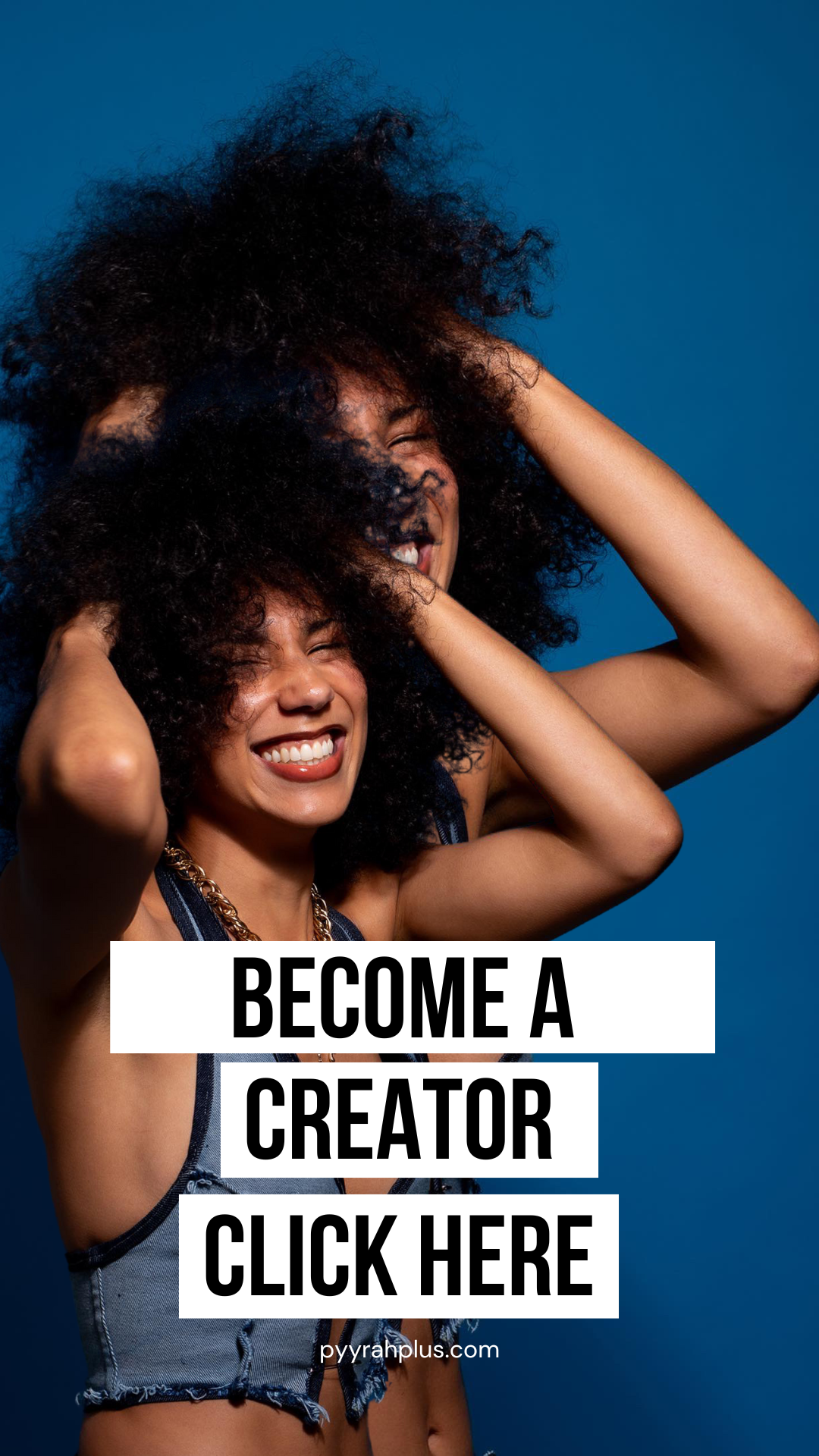In the rarefied air of high fashion, where success is often measured in ascending rungs of a gilded ladder, Alessandro Michele proposes a different geometry altogether. “It’s not a pyramid,” he muses, his voice carrying the quiet conviction of someone who has found profound truth in apparent simplicity. “It’s not a way to go up, but it’s more circular.” This perspective, shared in the sunlit expanse of Valentino’s headquarters where he has recently taken the creative helm, feels less like a statement about career trajectory and more like a philosophical framework for understanding the creative journey itself.
Michele’s vision of success as a circle rather than a linear path challenges the fashion industry’s traditional narratives of ambition and achievement. It’s a perspective born from his own remarkable journey – from working behind the scenes at Gucci through his transformative tenure as creative director, to his current role reimagining Valentino’s storied legacy. Yet what makes his philosophy particularly compelling is how it reframes not just success, but the very nature of creative freedom.
“I think that society pushes people thinking about the way that is good or bad to be in your life going up or getting back down,” he reflects, suggesting that true success lies not in vertical movement but in the freedom to move laterally, to explore and express oneself authentically within life’s great circle. This notion resonates deeply in an era where creative professionals increasingly seek meaning beyond traditional metrics of achievement.
The circularity Michele describes manifests in his approach to creativity itself. Like the serpentine pattern of a Gucci print or the sweeping arc of a Valentino gown, his creative process flows in elegant curves rather than straight lines. It’s about finding one’s place within the circle – a space where authenticity and artistic expression can flourish without the pressure of constant upward momentum. “Success is when you are in the right place,” he explains,
“when you are in a place that you choose, when you’re free to be yourself.”
This philosophy takes on particular poignancy in the context of Michele’s own career arc, which has been less about climbing to the top and more about expanding outward, exploring new territories while remaining true to his creative core. His transition from Gucci to Valentino exemplifies this circular movement – not a step up or down, but a continuation of his artistic journey, a new point on the circle from which to express his vision.
For emerging creatives and established professionals alike, Michele’s perspective offers a liberating alternative to the relentless pursuit of upward mobility. It suggests that true success might be found not in reaching for the next rung, but in moving freely within one’s chosen sphere, guided by authentic creative impulses rather than external expectations. In this view, success becomes less about the destination and more about the freedom to move, to create, and to express oneself fully within the grand circle of creative life.
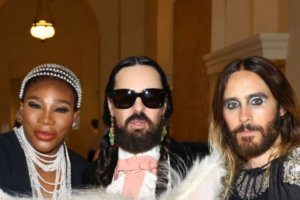
The power of this philosophy lies in its embrace of movement without judgment – lateral explorations are as valuable as vertical achievements, and changes in direction are not setbacks but natural expressions of creative growth. It’s a perspective that feels particularly relevant in today’s fashion landscape, where traditional hierarchies are being questioned and success is increasingly defined by authenticity and creative impact rather than titles or positions.
Drawing from the bullet points provided, I’ll craft a narrative-driven section that explores Michele’s unique philosophy of success.
In the gilded world of luxury fashion, where success is traditionally measured in seasonal collections and quarterly earnings, Alessandro Michele presents a quietly revolutionary perspective. His vision of success resembles less a corporate ladder and more a contemplative garden, where growth occurs in cycles and creativity flourishes in unexpected directions. “It’s not a pyramid,” he explains, hands gesturing to form a circle in the air, “but it’s more circular.” This simple yet profound observation challenges decades of industry orthodoxy about what it means to succeed in fashion’s upper echelons.
Michele’s circular philosophy emerged from years of observation within fashion’s innermost sanctums, first in the quiet ateliers of Gucci and now in the storied halls of Valentino. Where others might see a straight path upward through the ranks, he perceives a more nuanced journey – one where movement sideways or even momentary stillness can be as valuable as traditional advancement. This perspective feels particularly resonant in an era where creatives increasingly question conventional metrics of success.
The power of Michele’s approach lies in its emphasis on position rather than progression. “Success is when you are in the right place,” he reflects, “when you are in a place that you choose, when you’re free to be yourself.” This notion of chosen placement rather than prescribed advancement offers a compelling alternative to the relentless push toward the next achievement, the next collection, the next milestone. It suggests that true success might be found not in reaching for increasingly rarefied air, but in finding the precise spot where one’s creativity can flourish authentically.
Perhaps most striking is how Michele’s philosophy reframes the relationship between individual success and collective achievement. In his view, success isn’t a solitary summit but a shared space where creative visions align and resonate. “It could be also that when you sharing something with 10 friends, 15 people, people that believe in the same things,” he muses, suggesting that true fulfillment comes not from standing above others but from standing among kindred spirits.
This collaborative aspect of Michele’s circular philosophy manifests in his approach to creative leadership. Rather than imposing a singular vision from above, he creates spaces where multiple perspectives can coexist and enhance each other. It’s an approach that has served him well, from his transformative tenure at Gucci to his current role at Valentino, where he works to honor the house’s heritage while charting new creative territories.
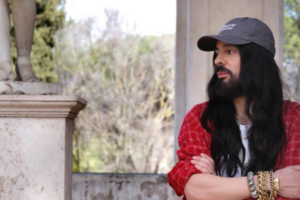
For those navigating their own creative paths, Michele’s philosophy offers both comfort and challenge. It suggests that success isn’t about following a predetermined route but about finding one’s authentic place within the great circle of creative life. This might mean stepping off the expected path, taking time for reflection, or choosing directions that others might question. The key lies not in the direction of movement but in the authenticity of the choice.
In an industry often criticized for its rigid hierarchies and relentless pace, Michele’s circular philosophy feels like a breath of fresh air – an invitation to reimagine success not as a destination to be reached but as a space to be inhabited fully and authentically. It’s a perspective that speaks to both seasoned professionals and emerging talents, suggesting that true success might be found not in climbing ever higher, but in moving freely within one’s chosen sphere, guided by genuine creative impulse rather than external expectations.
In the pantheon of fashion’s great love stories, Alessandro Michele’s eight-year romance with Gucci stands as one of the most captivating narratives of the 21st century. What began in the quiet corners of the design studio, where Michele spent years crafting behind the scenes, would blossom into one of the industry’s most remarkable transformations – a testament to the power of authentic creative vision in an era of calculated commercial strategies.
“It’s been a love affair,” Michele reflects, his voice carrying the warmth of someone recalling not just a career milestone, but a profound personal journey. This characterization feels particularly apt for a creative partnership that defied industry conventions from its very inception. When Michele emerged from the background to assume the role of creative director, the fashion world held its collective breath. Here was something unprecedented: a relative unknown, plucked from the atelier’s shadows, being handed the keys to one of luxury’s most storied houses.
What followed was nothing short of alchemical. “I just had fun,” Michele recalls with characteristic humility, “because I was surrounded by friends and people that, you know, work with me for years and years.” This seemingly simple approach – prioritizing authentic expression over market expectations – would prove revolutionary. Under Michele’s guidance, Gucci underwent not just a aesthetic transformation but a philosophical one, challenging long-held assumptions about luxury, gender, and creativity itself.
The speed of the transformation was breathtaking. From that first men’s show, followed weeks later by a watershed women’s collection, Michele’s vision struck fashion like lightning. “I worked so hard,” he acknowledges, “because I love my work.” This love manifested in collections that felt less like commercial propositions and more like personal expressions – rich tapestries woven from threads of vintage references, contemporary culture, and pure creative instinct.
Yet perhaps most remarkable was Michele’s ability to maintain his authentic voice even as success mounted. In an industry where commercial pressure often dilutes creative vision, he remained steadfastly true to his artistic instincts. “I was really confused,” he admits about the height of his success, “just concentrated on the many, many things that I was working on.” This confusion, rather than hindering his work, seemed to protect him from the industry’s tendency to polish away rough edges and unique perspectives.
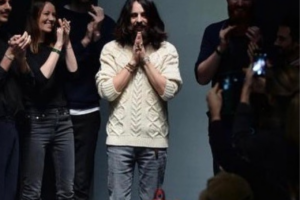
As Gucci’s influence grew under his direction, Michele managed to preserve what he calls his “bubble” – a creative space where authenticity could flourish despite external pressures. “I felt always in a tiny studio,” he recalls, suggesting that maintaining this intimate perspective was crucial to preserving his creative integrity. It’s a reminder that even at the helm of a global luxury brand, authentic creativity requires protecting one’s personal space and artistic vision.
The Gucci chapter of Michele’s career stands as a testament to what’s possible when authentic creative vision meets institutional support. It demonstrates that true transformation in fashion comes not from following trends or market research, but from allowing genuine artistic expression to flourish. His tenure rewrote not just the rules of luxury fashion but our understanding of how creativity can thrive within corporate structures while maintaining its essential authenticity.
For creatives navigating their own professional journeys, Michele’s Gucci years offer a powerful lesson: success need not come at the cost of authenticity. Indeed, his experience suggests that the most profound transformations occur when we remain true to our creative instincts, even – or especially – when they challenge industry conventions.
In the relentless rhythm of the fashion calendar, where seasons blur into one another and creativity operates on command, Alessandro Michele’s 18-month sabbatical between his tenure at Gucci and his appointment at Valentino stands as a radical act of self-preservation. This interlude, far from being a mere pause between acts, revealed itself as perhaps his most profound creative endeavor – the art of rediscovering oneself.
“Simple things,” Michele recalls, his voice softening at the memory, “staying at home, things that I couldn’t do working like eighteen hours every day.” In these words lies a gentle rebellion against fashion’s perpetual motion, a reminder that sometimes the most revolutionary act is simply stopping. For the first time since beginning his career, Michele found himself in a world without deadlines, without collections, without the constant pressure to innovate.
What emerged in this space of pause was something unexpected – not the polished fashion director, but a child-like spirit that had been waiting patiently beneath the surface of success. “I think that I really discovered that the kid is still with me,” Michele reveals, “I’m a kid, I’m not a boy, I’m not a man.” This recognition of his perpetual youth wasn’t a regression but a reconnection with the pure, unfiltered creativity that had fueled his earlier triumphs.
The sabbatical took on its own gentle rhythm. Mornings stretched luxuriously into three-hour breakfasts at Roman cafés, where Michele could observe the play of winter light on ancient facades. Impromptu visits to museums became possible, not as research for collections but purely for pleasure. These moments, seemingly ordinary, became extraordinary in their unhurried appreciation. “I want to spend time just me and myself,” he reflects, suggesting that such solitude is not lonely but deeply nurturing.
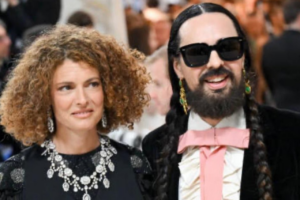
Perhaps most striking was Michele’s discovery that stepping away from fashion didn’t diminish his love for it – rather, it deepened his understanding of authentic creative expression. Without the pressure to produce, he could examine his relationship with creativity itself. The sabbatical revealed that true creative freedom isn’t found in the absence of constraints but in the ability to choose one’s relationship with them.
For creative professionals contemplating their own relationships with work and rest, Michele’s sabbatical offers valuable insights. It suggests that periods of pause aren’t merely about recovery but about rediscovery. In a culture that often equates stopping with stagnation, his experience reminds us that fallow periods can be incredibly fertile ground for creative renewal.
The rhythm of Michele’s sabbatical – the long walks in the countryside, the spontaneous museum visits, the unhurried conversations with friends – created space for what he calls “the kid” to emerge. This inner child, free from industry expectations and the weight of success, became not just a companion but a guide back to authentic creative expression. “I was with that kid,” he says, “I’m not alone, he’s here with me.”
This period of transition ultimately reinforced Michele’s commitment to maintaining creative authenticity in his work. The lesson wasn’t about escaping the fashion industry but about finding ways to preserve that essential childlike spirit – the ability to play, to wonder, to create without fear – even within its demanding structures. As he prepared to begin his new chapter at Valentino, these insights would prove invaluable, informing not just his creative approach but his understanding of what it means to truly flourish in the fashion industry while remaining authentically oneself.
In the storied narrative of fashion’s great houses, few transitions carry the weight of expectation and possibility that accompanies Alessandro Michele’s arrival at Valentino. Like an accomplished novelist taking up the pen of a literary hero, Michele approaches this new chapter with a blend of reverence and revolutionary spirit, sensing in Valentino’s rich heritage not just a legacy to preserve, but a living language through which to speak to contemporary culture.
“I can feel the things talking to me,” Michele says of his early days in the maison, describing how the very walls of Valentino seem to whisper stories of its founder. “When I came here the first time, I came back at home and… I really felt so deeply in touch with him.” This spiritual connection to Valentino Garavani’s legacy transcends mere appreciation for archives or aesthetics – it speaks to a deeper understanding of the house’s soul, what Michele calls its “dusty chic Italian crazy quirky and dreamy” essence.
The partnership between Michele and CEO Jacopo Venturini emerges as a crucial element in this renaissance. Their collaboration, forged initially at Gucci and renewed at Valentino, exemplifies the rare alchemy that occurs when business acumen meets creative vision in perfect balance. “We had so much fun together,” Michele recalls of their previous work, “we laugh a lot, we work so hard.” This blend of joy and rigor suggests a partnership capable of navigating the delicate balance between commercial success and creative authenticity.
In approaching Valentino’s codes, Michele demonstrates an almost archaeological sensitivity, carefully brushing away layers of time to reveal the living heart of the house. “I saw life in the middle of layers of fabric and very light chiffon and crêpe de chine and embroidery,” he explains, painting a picture of discovery that feels more like recognition – as if these elements had been waiting for his particular interpretation. His approach suggests that respecting heritage need not mean mere reproduction, but rather understanding the spirit that animated the original creation.
The risk inherent in such a transition is not lost on Michele. “Risk means life,” he asserts, embracing the challenge with characteristic philosophical depth. His vision for Valentino isn’t about dramatic rupture or blind preservation, but about finding new resonances between the house’s timeless elegance and contemporary cultural conversations. The pre-collection, his first statement for the house, already hints at this delicate balance – acknowledging the past while quietly insisting on the present.
Perhaps most striking is Michele’s approach to the haute couture tradition that sits at Valentino’s heart. Having never created a couture collection before, he approaches this new territory with a mix of humility and excitement that suggests fresh possibilities for the art form. “It’s going to be such an amazing trip,” he muses, his words carrying the weight of both personal discovery and institutional evolution.
This new chapter in Valentino’s history promises more than just a change of creative direction – it suggests a reimagining of how heritage brands can evolve while maintaining their essential character. Through Michele’s eyes, Valentino’s legacy becomes not a constraint but a conversation, not a museum piece but a living language through which to articulate new ideas about beauty, luxury, and creativity.
As Michele works to shape this next era of Valentino, his reverence for the house’s founder remains a guiding principle. “There is always Mesier Valentino somewhere with me,” he reflects, suggesting that the greatest homage to a legacy might be not just preserving it, but allowing it to breathe and grow in new directions. In this delicate dance between past and future, Michele seems poised to write a new chapter in fashion history – one that honors its roots while reaching boldly toward tomorrow.
In an era where fashion’s traditional seasonal rhythm has been replaced by the constant pulse of social media, creative leadership demands a delicate balance between visibility and vision. Alessandro Michele’s approach to this digital landscape offers a masterclass in maintaining artistic integrity while navigating the unprecedented scrutiny that defines our age.
“I don’t waste my time doing this crazy thing like checking everything,” Michele reveals, offering a perspective that feels almost radical in its simplicity. In a world where many creative directors find themselves caught in the endless scroll of comments and critiques, his deliberate distance from digital noise represents not disconnection but preservation – of focus, of vision, and most importantly, of creative authenticity.
This measured approach to social media scrutiny stems from a deeper understanding of what Michele calls “real life.” For him, authentic creative leadership exists not in the virtual realm of likes and comments but in tangible moments of human connection. “Real life is the one that I can really see with my eyes, that I can touch,” he explains, suggesting that true innovation springs not from digital feedback but from lived experience.
The foundation of Michele’s leadership philosophy rests on trust-based relationships, particularly evident in his partnership with Valentino CEO Jacopo Venturini. Their collaboration exemplifies how creative vision can flourish when supported by mutual understanding and shared values. “We had so much fun together,” Michele notes, describing a working relationship that transcends traditional business hierarchies to become something more akin to creative partnership.
Yet perhaps most striking is Michele’s approach to managing industry expectations in an age of instant judgment. Rather than attempting to please everyone – an impossible task in the digital era – he maintains an unwavering commitment to authentic expression. “When you pretend to be for everybody, it’s very complicated,” he observes. “I’m trying to be good with myself that’s a big deal.”
This authenticity-first approach extends to his handling of heritage brands in the digital age. Whether at Gucci or now at Valentino, Michele demonstrates how to honor tradition while pushing boundaries, understanding that innovation doesn’t mean abandonment of the past but rather its thoughtful evolution. His pre-collection for Valentino, which sparked intense social media discussion, exemplifies this balance – acknowledging heritage while asserting a contemporary voice.
For creative leaders navigating their own path through the digital landscape, Michele’s example offers several key insights. First, the importance of creating boundaries around one’s creative process, protecting it from the constant chatter of social media. Second, the value of building genuine relationships that can weather both praise and criticism. And finally, the courage to maintain artistic integrity even when facing digital scrutiny.
The challenge of creative leadership in the digital age isn’t just about managing social media presence or meeting market expectations – it’s about maintaining the space necessary for genuine creativity to flourish. Michele’s approach suggests that true innovation comes not from reacting to every digital trend or comment, but from cultivating an environment where authentic creative expression can thrive.
As the fashion industry continues to grapple with the pace and pressure of digital transformation, Michele’s leadership style offers a compelling alternative to the reactive, always-on approach that often characterizes creative direction in the digital age. His success suggests that sometimes the most powerful response to the noise of the digital world is the quiet confidence to stay true to one’s creative vision.
In the grand tapestry of fashion history, Alessandro Michele’s journey stands as a testament to the transformative power of authentic creative expression. His path – from the quiet corners of Gucci’s design studio to the helm of Valentino – offers more than a narrative of professional achievement; it presents a philosophical framework for understanding the relationship between creativity, freedom, and success in any creative endeavor.
Michele’s vision of success as circular rather than vertical challenges conventional wisdom about career progression and creative achievement. “It’s not a pyramid,” he insists, suggesting instead a more fluid movement through life’s creative spaces. This perspective feels particularly resonant in an era where traditional markers of success are being reevaluated across industries, offering a more nuanced understanding of what it means to truly flourish in one’s chosen field.
The importance of maintaining one’s authentic voice amid success emerges as perhaps the most powerful lesson from Michele’s experience. His ability to preserve what he calls his “kid” – that essential creative spirit that remains unchanged by external validation or criticism – offers a blueprint for creative professionals at all stages of their careers. It suggests that true success lies not in adapting to others’ expectations but in creating space for one’s authentic vision to flourish.
His 18-month sabbatical between Gucci and Valentino demonstrates the value of purposeful pause in creative life. In a world that often equates constant production with progress, Michele’s willingness to step back and reconnect with simple pleasures – three-hour breakfasts, spontaneous museum visits, countryside drives – reveals how periods of apparent inactivity can nurture rather than hinder creative growth.
As Michele begins his new chapter at Valentino, his approach to heritage and innovation offers insights into how tradition and progress can coexist. His deep reverence for Valentino’s legacy, combined with his commitment to contemporary expression, suggests that honoring the past need not constrain future possibilities. Instead, it can provide rich soil from which new creative visions can grow.
Perhaps most significantly, Michele’s journey illuminates the importance of maintaining freedom – not just creative freedom, but the freedom to remain true to oneself despite external pressures. “I really fight for this freedom from the very beginning of my life,” he reflects, suggesting that the preservation of personal authenticity requires constant vigilance and courage.
For creative professionals charting their own paths, Michele’s example offers both inspiration and practical wisdom. It suggests that success need not come at the cost of authenticity, that periods of pause can be as productive as periods of intense activity, and that true creative leadership stems from maintaining one’s essential character while embracing new challenges.
As fashion continues to evolve in an increasingly digital and fast-paced world, Michele’s philosophy – emphasizing authenticity, embracing risk, and maintaining personal freedom – provides a valuable compass for navigating change while remaining true to one’s creative vision. His journey reminds us that in any creative field, the most profound success lies not in reaching a particular destination, but in maintaining the freedom to express one’s authentic voice throughout the journey.


